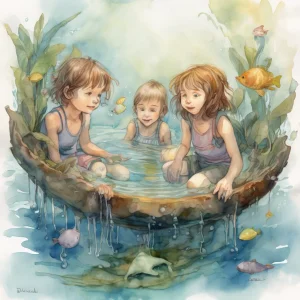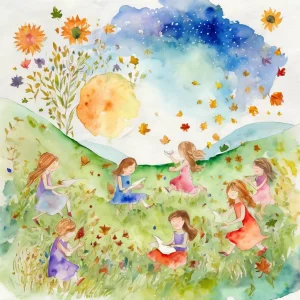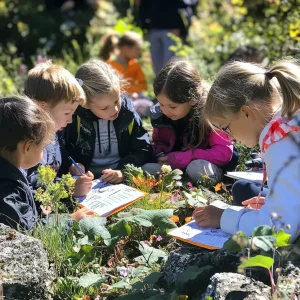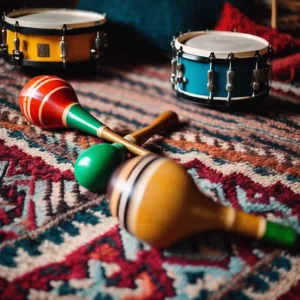Activity
Similar Activities
Nature's Objects: Exploring Buoyancy Adventure
Children’s Age: 6–7 years
Activity Duration: 10 minutes
An engaging hands-on activity for children aged 6-7 to explore buoyancy with natural objects.
Activity Duration: 10 minutes
Whispers of the Seasons: Seasonal Collage Exploration
Children’s Age: 5–6 years
Activity Duration: 10 minutes
Engaging activity where children create collages representing different seasons.
Activity Duration: 10 minutes
Cultural Creatures: Stop-Motion Animation Adventure
Children’s Age: 4–9 years
Activity Duration: 10 – 25 minutes
An interactive activity using technology to create stop-motion animations exploring plants and animals from diverse cultures.
Activity Duration: 10 – 25 minutes
World Wonders: The Virtual World Tour Adventure
Children’s Age: 5–18 years
Activity Duration: 35 minutes
Let's go on a Virtual World Tour Adventure! You can discover countries, cultures, and famous landmarks using a computer or tablet with internet access. If you have headphones, you …
Activity Duration: 35 minutes
Empathy Tales: Digital Story Clay Creations
Children’s Age: 3–18 years
Activity Duration: 10 – 25 minutes
In this activity, children aged 3 to 18 years old can explore empathy and creativity through a mix of digital storytelling and clay sculpting. You'll need a tablet or computer, cla…
Activity Duration: 10 – 25 minutes
Nature Scavenger Hunt to Boost Language Skills
Children’s Age: 0 month – 18 years
Activity Duration: 10 minutes
Let's go on a Nature Scavenger Hunt to find cool things outside! Grab a bag, a list of items like acorns and leaves, and maybe a magnifying glass. Find a safe spot, make the list, …
Activity Duration: 10 minutes
Nature Quest: Explore, Learn, and Respect
Children’s Age: 10–15 years
Activity Duration: 0.5 – 1 hours
The Nature Scavenger Hunt activity is designed to help children aged 11 to 15 develop morals, academic abilities, and a love for nature. Prepare by gathering supplies like lists, p…
Activity Duration: 0.5 – 1 hours
Enchanted Digital Family Storytime Journey
Children’s Age: 6 months – 1.5 years
Activity Duration: 5 minutes
Engage your child with "Digital Family Storytime," a captivating activity tailored for children aged 6 to 18 months. Through interactive storytelling on a tablet or smartphone, thi…
Activity Duration: 5 minutes
Harmony Haven: Virtual Music Band Challenge
Children’s Age: 10–12 years
Activity Duration: 20 – 30 minutes
Engage children in the "Virtual Music Band Challenge," a fun and educational activity combining music creation with healthy lifestyle tips. Participants will need devices with inte…
Activity Duration: 20 – 30 minutes
Cultural Photo Exploration: World Wonders Journey
Children’s Age: 6–10 years
Activity Duration: 20 minutes
Embark on the "Cultural Photo Exploration" activity to boost children's play skills, cultural awareness, and academic development through an outdoor photography journey. Choose a d…
Activity Duration: 20 minutes
Adventure Through the Obstacle Course Wonderland
Children’s Age: 2–3 years
Activity Duration: 15 minutes
"Obstacle Course Adventure" is an engaging outdoor activity tailored for children aged 24 to 36 months, focusing on language and motor skill development in a fun environment. By se…
Activity Duration: 15 minutes
Enchanted Seasons: Seasonal Nature Hunt
Children’s Age: 6–10 years
Activity Duration: 25 – 30 minutes
"Seasonal Nature Hunt" is a delightful activity designed for children aged 6 to 10, focusing on cognitive development, nature appreciation, and logical reasoning. Kids can explore …
Activity Duration: 25 – 30 minutes




























